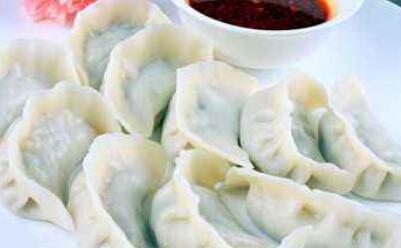‘南宫NG28官网’双语科技百科(化学) 第47期:瓷器的发展
本文摘要:Development of Porcelain瓷器的发展It’s widely acknowledged that porcelain was invented by Chinese. After several thousand years of hard work, the early potters accumulated rich experience in their craft. The earliest porcelain appeared in the slave societies of the Shang and Zhou Dynasties.瓷器是中国人发明者的,这是举世公认的。
Development of Porcelain瓷器的发展It’s widely acknowledged that porcelain was invented by Chinese. After several thousand years of hard work, the early potters accumulated rich experience in their craft. The earliest porcelain appeared in the slave societies of the Shang and Zhou Dynasties.瓷器是中国人发明者的,这是举世公认的。瓷器的发明者是在陶器技术大大发展和提升的基础上产生的。瓷器最先经常出现于商代和周代的奴隶制社会。Porcelain as such was, in its initial stage, known now as the proto-celadonl from which porcelain developed independently. Whereas pottery is porous and o-paque and gives a dull sound when struck, porcelain, non-porous, translucent,and smooth-surfaced, is finer, harder, and closer-knit in texture and gives a me-tallic sound when struck.中国商周时期的完整瓷器称作“完整青瓷”,它们和陶器的区别在于:陶器渗漏性强劲,不半透明,敲打时收到厚实的声音;早期完整瓷器质地较陶器细致柔软,吸水性较强,敲打时收到悦耳的金属声。
A considerable number of Shang and Zhou proto-celadon vessels have been unearthed in many provinces in the Huanghe River(Yellow River) valley and the middle and lower reaches of the Yangtze River. These findings revealed basic char-acteristics of porcelain.Proto-celadon used white china clay, or kaolin (an infusible white mineral earth produced in the area of Gaoling Village in Fuliang County in East China’s Jian-gxi Province) , which is a fine, pure material suitable for making high quality porce-lain. The firing temperature was at least l,200 degrees Celsius-much higher than for firing potfery.在黄河流域和长江中下游沿岸的商代和西周遗址中找到的“完整青瓷”显著的具备瓷器的基本特征。它们由白色瓷土和高岭土(原产江西省浮梁县高岭村的一种矿物土)烧成,这些材料更容易烧成出有高质量的瓷器,工件温度高达1000℃~1200℃,比陶器的工件温度高达许多。Porcelain making be-came steadily popular in the Warring States Peri-od, when it began to step out of its primitive state.瓷器业稳步发展,日益成熟期,在战国时期早已十分普及。
Early in the Western Han Dynasty whole sets of celadon vessels were manufactured, according to speamens of Western Han vessels that were ex-cavated in Peixian Coun-ty, Jiangsu Province. The ewers, steamers, vases,jars, tripods and boxes have a hard paste and are smooth and lustrous compared with earlier wares. The frequent dis-covery of Han porcelain in archaeological digs indicates that large quantities of the ware were manufactured during the period.根据江苏省沛县发掘出的西汉早期的瓷器,当时早已开始生产成套的瓷器器皿了。耳杯、沙锅、花瓶、罐、三脚壶、盒等柔软细致,釉面有光泽。
此外在考古中大大找到汉代瓷器,这解释当时瓷器已大批量生产了。白瓷经常出现于北朝时期,白瓷的经常出现为釉下彩和釉上彩瓷器的发展打下基础。到了隋朝和唐朝,瓷器更加有新的发展,颜色非常丰富、样式精致。而且釉的成分所含多种金属氧化物,使釉底颜料烧成后异彩纷呈。
White porcelain was invented during the Northern Dynasties (386-581),which laid a foundation for the invention of under glazed and on-glazed porcelain.It was in the Sui and Tang dynasties that porcelain became more varied and color-ful. Glaze ingredients containing different metal oxides became available to pro-duce brilliant underglaze ( pre-glaze) colors via firing.宋代制瓷业蓬勃发展,名窑兴起,构成了备不具特色的地方瓷器派系。宋代以前,瓷器装饰主要靠雕刻印嵌,即在瓷糊变干之前用刀在瓷身上刻有上花纹印章,然后上釉烧制。
而到了宋、辽、金等时期,人们在瓷胎上必要绘画图案,这标志着中国瓷器艺术转入一个全新的发展阶段。In the Song Dynasty, porcelain kilns mushroomed in different places, while porcelain schools representative of particular regions appeared. Before the Song Dynasty, porcelain was decorated by caNed, incised, and impressed designs.That is, before the paste was dried, designs were carved or incised with a knife on the unglazed body or impressed with stamps for mass production and then glazed for firing. In the Song, Liao,and Jin Dynasties, decorative designs were painted o-ver the glaze, with this painting on porcelain marking an entirely new stage in Chi-nese porcelain art.元代的瓷器业持续蓬勃发展,建构出有很多知名的瓷器种类。
明清两代是中国瓷器生产最鼎盛时期。由于瓷料质地精美、烧成考究、色料非常丰富、作工高超,再加当时的各种社会影响,使瓷器生产的数量、造型、色彩、图案都超过了高峰。
The Yuan Dynasty saw continuous new developments in the art of porcelain making which contributed to different types of famous wares. Porcelain-manufac-turing craft attained its acme in Chinese history in the Ming and Qing dynasties.This was shown in a tremendous variehjr of vessel shapes, lustrous colors, and splendid designs made possible by the fine texture of the paste, adequate firing,abundance of pigments, improvement of craflsmanship, and various social influ-ences of the time. Apart from exquisite patterns, Ming porcelain decoration fea-tured landscapes, portraits, and flower-and-bird and other paintings, while most of the Qing paintings on porcelain were works of famous contemporary artists or imitations of their works.明代的瓷器不仅图案精致,还减少了大自然景色、画像、花鸟等绘画,而清代的瓷器图案很多都是当代艺术大师的作品或对他们的绘画。明清时期景德镇沦为瓷器业的中心,“瓷都”的奠定,使景德镇窑在瓷器行业中独占鳌头,为瓷器的进一步提高做出巨大贡献。Jingdezhen in Jiangxi Province was the center of porcelain production in China during the Ming and Gting dynasties. lts kilns have contributed much to the perfec-tion of porcelain and occupy a distinguished place in ceramic art.经过漫长的历史发展,中国经常出现了很多种名瓷,还包括越州的青瓷,邢洲的白瓷,河北的定瓷,汝州的汝瓷,浙江省的龙泉青瓷和景德镇瓷器。
这些名瓷各具特色,名扬四海。China’s various dynasties have seen a wealth of wares including the green Yue ware of Yuezhou, Xing white porcelain ware of Xingzhou, Ding ware in Hebei, Ru ware of Ruzhou, the celadon of Longquan in present-day Zhejiang Province, and Jingdezhen ware. The distinctive style of each is admired in different parts of the world, for Chinese pottery and porcelain went abroad as early as in the Han Dy-nasty, and was exported in large quantities by the late Tang Dynasty. From North China the wares went wesiward along the famous “Silk Road”; from the south they were shipped by sea to neighboring Asian countries and then to North Africd and Mediterranean countries. Not until the i5th century did they reach Europe and so have the worldwide impact that provided their brilliant page in the history of world civilization.早于在汉代,中国瓷器就开始走进国门,至晚唐时期大量出口。中国瓷器在中国北部由知名的“丝绸之路”运往西方,在中国南部经海运运往亚洲邻国,然后运到非洲和地中海沿岸各国。但中国瓷器直到15世纪才运往欧洲,也从此在世界的文明历史写了巅峰的一页。
Today, every Chinese province or autonomous region turns out ceramics with local features or in the style of the ethnic group of the area.People in the business have inherited and carried forward the fine traditions of the ancient Chinese ceramic art, thereby creating a flourishing situation in pottery and porcelain production.今天,中国的各省市自治区都能生产出有具备地方特色的陶瓷制品,专门从事陶瓷讫韭的人们也将古代陶瓷艺术的优良传统发扬光大,首创了陶瓷生产兴旺兴盛的新局面。
本文关键词:南宫NG28官网
本文来源:南宫NG28官网-www.gktechniek.com
推荐资讯
- 别让物联网硬件成为下一个共享经济‘南宫N2024-12-27
- “南宫NG28官网”新研究或将产生新型低2024-12-25
- 区块链技术是供应链企业的自然发展方向_南2024-12-25
- 南宫NG28官网-RFID技术在设备巡检2024-12-23
- MWC 2020确认取消:OPPO Fi2024-12-21
- “生物特征识别多模态融合”国际标准立项,2024-12-21
- “南宫NG28官网”冰岛 一个盛产诗人的2024-12-21
- ‘南宫NG28官网’揭秘:NK细胞与na2024-12-19
- 南宫NG28官网:紫光展锐李占博:AIo2024-12-19
- 南宫NG28官网|空间硬件的电气接地方法2024-12-17
餐饮项目推荐
- 加盟指南
- 经营技巧
- 餐饮营销
- 别让物联网硬件成为下一个共享经济‘南宫N
- “南宫NG28官网”新研究或将产生新型低
- 区块链技术是供应链企业的自然发展方向_南
- 南宫NG28官网-RFID技术在设备巡检
- MWC 2020确认取消:OPPO Fi
- “生物特征识别多模态融合”国际标准立项,
- “南宫NG28官网”冰岛 一个盛产诗人的
- ‘南宫NG28官网’揭秘:NK细胞与na
- 南宫NG28官网:紫光展锐李占博:AIo
- 南宫NG28官网|空间硬件的电气接地方法


























我要加盟(留言后专人第一时间快速对接)
已有 1826 企业通过我们找到了合作项目